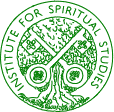
|
|
Walking the Labyrinth |
Seminar delivered by Rev'd Libby Delbridge on March 5, 2005On March 6th, 2005, the Revd Libby Delbridge led an all-day seminar to the Institute for Spiritual Studies on Walking and Praying the Labyrinth. This intriguing title was explained as a prayerful, mystical experience coming from historical times. It being based on prayerful experience, was in Libby's words, a "walking prayer opportunity." She also described it as a "single path tool for personal, psychological and spiritual transformation." With such claims in mind, we were drawn to the difference between mazes and labyrinths. Firstly, mazes have choices, dead ends, and one can get lost in them. They can have more than one entrance and exit. But labyrinths have a set path, with no choices, the entrance path to the centre being the same as the exit path. One can relax with the latter experience; one can trust where one is going; and there is no anxiety about taking a wrong turn. Before we undertook walking the experience, Libby described how the labyrinth had a mouth, paths or circuits, walls and a gaol (or labyrinth centre). In pre-Christian times, there was a Cretan labyrinth with a cross at the centre and a number of circuits, while on the floor of Chartres Cathedral (sometimes called the Christian labyrinth), there are four quadrants and the path covers the area in unexpected ways. The walk itself into and out from the labyrinth contains three stages: purgation, illumination, and union. In simpler terms, this could be called releasing or letting go of the cares of the world; receiving or meditating to receive what is available to you; and returning, or rejoining the world and reintegrating your experience as you walk back along the same path. Later we took off our shoes and some of us our socks; we felt the mat with its lines beneath us; we walked within the lines; gave way to those coming out of the centre; we sometimes stopped; we listened; some if us slowed down; we told ourselves "I am a pilgrim seeking ..." The reactions and feelings we exchanged later in a circle were surprisingly different: a slowing down; a calmness; a stillness; the ever-present mat; a defined path; safety; a keen sense of anticipation; a sense of structure; a spiritual dimension to being in a crowd. Others felt distracted; or contented; one noticed her shadow; another gazed through a window at the uneven chancel stonework of St Peter's church exterior. So the object of the exercise, to give a structured prayerful experience, came to us in different ways. So if in the future some of us take part in a labyrinth walk, whether it is Chartres or Glen Iris, in Grace Cathedral or somewhere else, it may help us to connect in a relaxed way; when we take a light with us with our lit candles; or help us to change our posture; to breathe better; to heighten our sense of freedom or to reconnect with previous experiences of other labyrinths or places in our memory. Later we drew a Classical labyrinth in crayon in the Hughes Room, quite a mathematical challenge. We walked the labyrinth again as we meditated on the healing of the blind beggar Barthimaeus. We sang a final hymn before receiving a blessing, after an enlightening, if somewhat unorthodox Saturday journey, while it rained hard outside. Libby Delbridge had inspired us to think outside the pilgrim norms and had brought a new way to undertake our closer walk with God during this Lent, and beyond.
This site is hosted by St Peter's Eastern Hill,
Melbourne, Australia. |